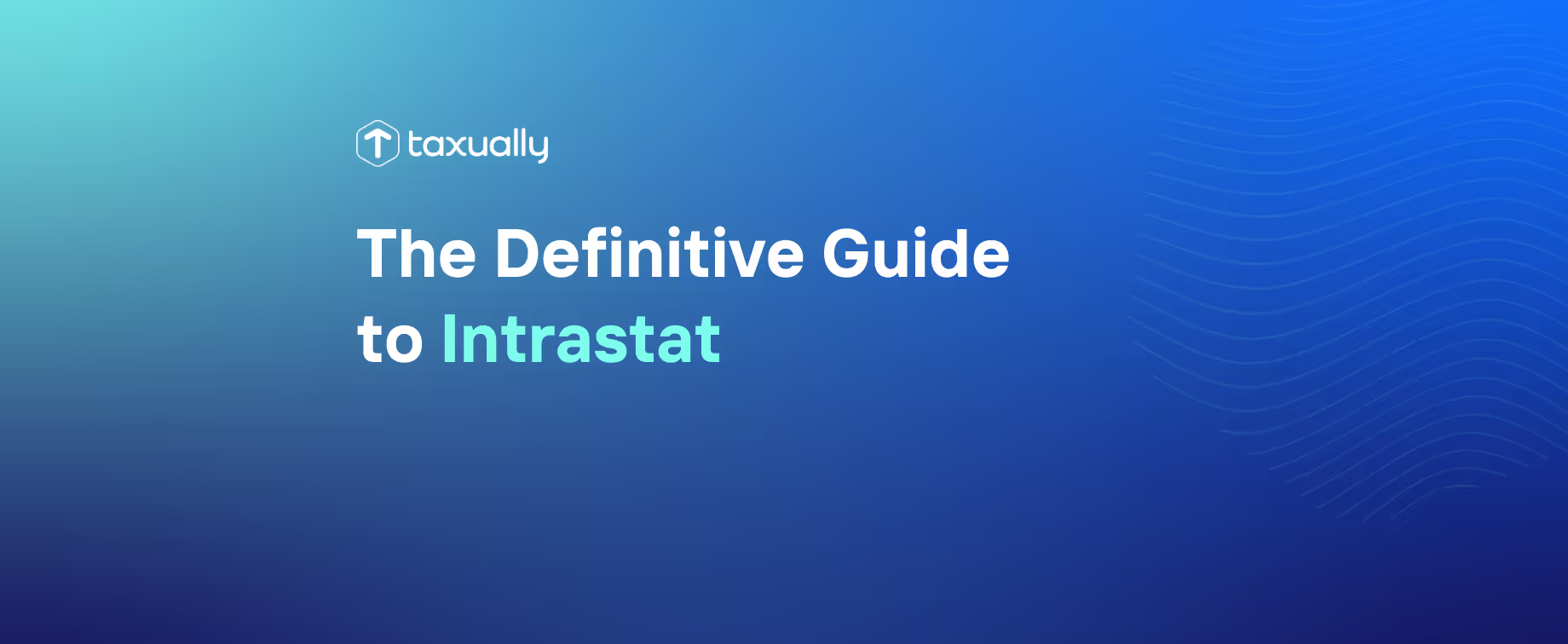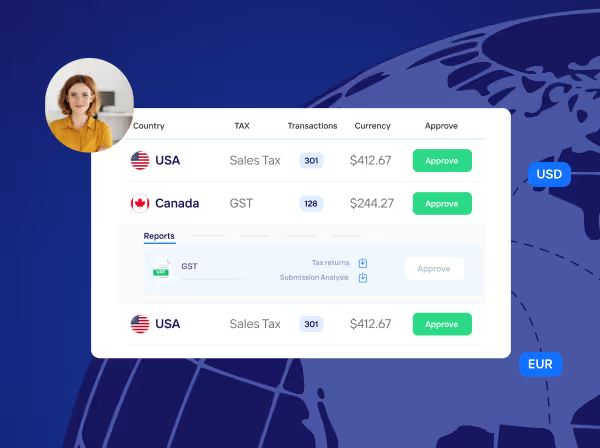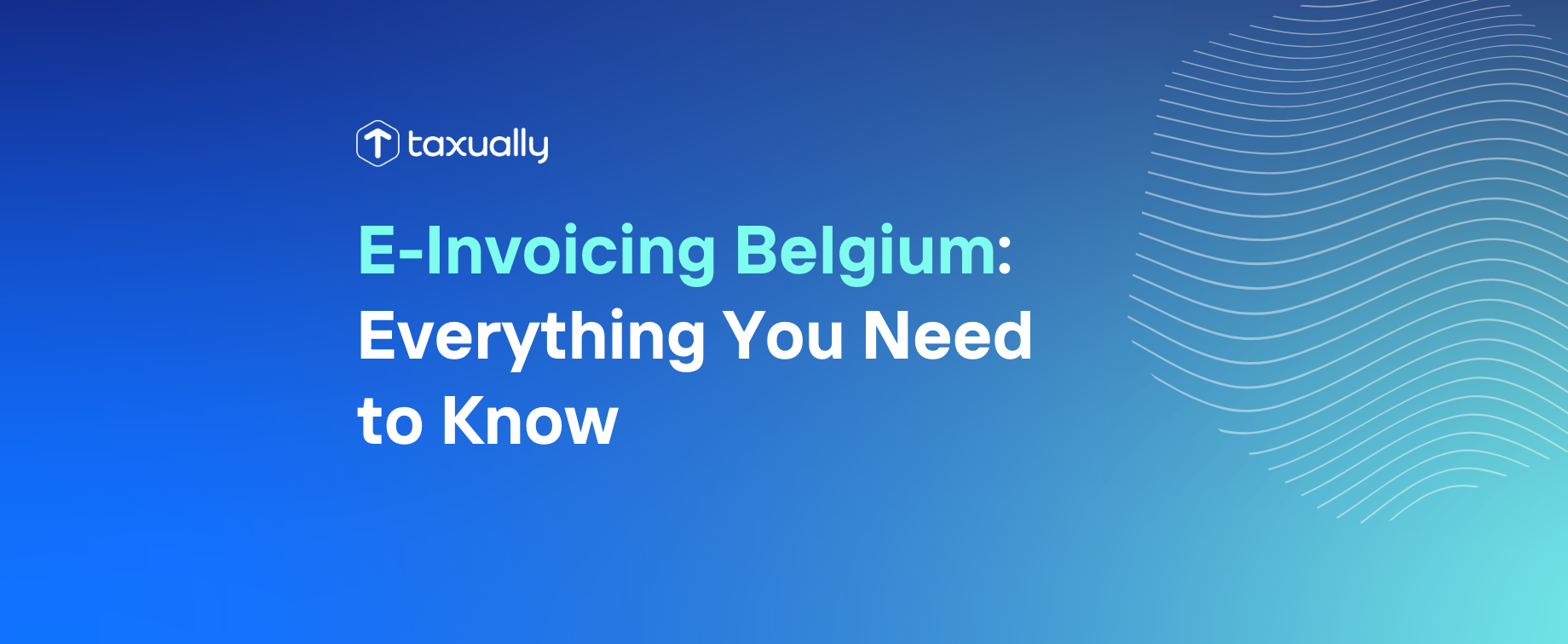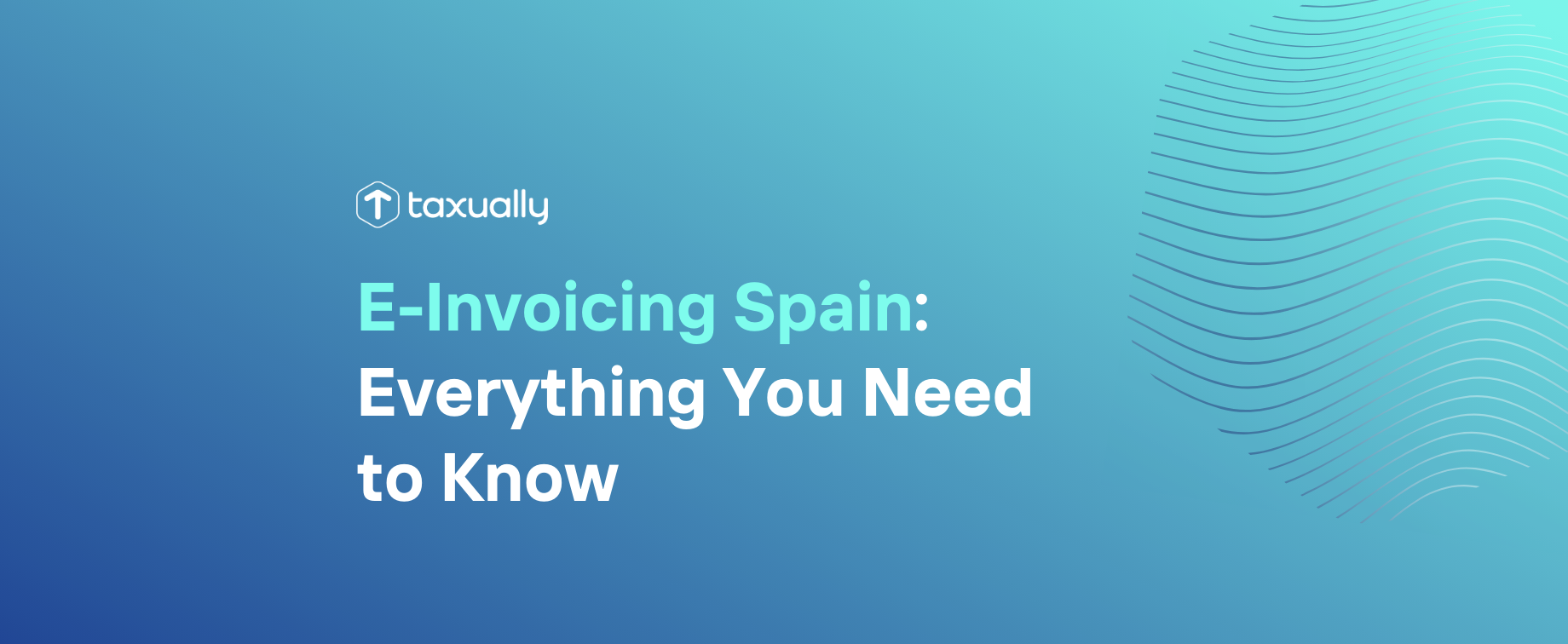Key takeaways
- Intrastat is mandatory for businesses exceeding national thresholds on arrivals or dispatches of goods within the EU, providing key trade statistics for policymaking and fraud prevention.
- Accurate, timely reporting of commodity codes, values, and movements helps ensure compliance and avoid penalties, with rules and thresholds varying by country.
- Technology and expert support can streamline Intrastat management, reduce administrative burden, and keep businesses up to date with changing requirements.
As the foundation for foreign trade statistics within the EU, Intrastat plays a crucial role in shaping policies and monitoring trade. For a comprehensive understanding of Intrastat reporting and why it matters for your business, read on.
Understanding Intrastat reporting
Intrastat reporting is a statistical system designed for businesses engaged in EU trade. Its purpose is to measure the movement of goods and produce using foreign trade statistics, which are essential for trade policy and sectoral analysis. Intrastat declarations require businesses to report the arrivals and dispatches of goods between EU Member States.
This system helps to monitor trade within the European Union and uncover potential VAT fraud, making it a vital reporting procedure for companies that trade within an EU country.
What is Intrastat?
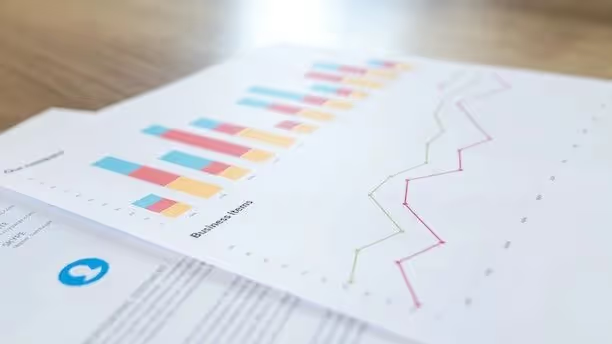
Intrastat is the system responsible for gathering data and generating statistics regarding the exchange of goods between nations of the European Union (EU). It replaced customs declarations for intra-EU trade, aiming to reduce the administrative burden on businesses and maintain accurate trade statistics.
The Combined Nomenclature (CN) classification system is used for Intrastat, which classifies goods using an 8-digit code. This system is updated annually, ensuring that it remains current with advances in technology and changes in the international trade of goods.
The role of Intrastat in European Union trade
Intrastat plays a crucial role in providing data for government departments to set trade policies, plan transport infrastructure, and assess markets. By collecting information on the movement of goods between EU countries, Intrastat helps uncover potential VAT fraud, maintain accurate trade statistics, and inform policymaking.
This makes Intrastat an indispensable tool for businesses engaged in intra-EU trade and the authorities responsible for regulating it.
Intrastat vs VAT
Intrastat and Value Added Tax (VAT) are distinct systems, each serving a different purpose in the context of European Union trade. Intrastat focuses on the movement of goods within the EU, collecting data on dispatches and arrivals between Member States. In contrast, VAT is a consumption tax applied to goods and services, and the reporting requirements are submitted to national tax authorities rather than statistical bureaus.
Key elements of Intrastat declarations
Intrastat declarations require businesses to provide statistical and fiscal data, including:
- Member State
- Commodity code
- Invoice value
- Other information depending on reporting thresholds
These declarations, which hold significant statistical value, are submitted to national statistical bureaus and typically completed monthly, in conjunction with the VAT return.
There are two main components to Intrastat declarations:
- Arrivals (Inward Movements): These are goods brought into a specific EU Member State from another EU Member State.
- Dispatches (Outward Movements): These are goods sent from a specific EU Member State to another EU Member State.
By providing accurate and timely data, businesses can ensure compliance with Intrastat requirements and avoid penalties.
Statistical data requirements
Intrastat data requirements vary by country and depend on the reporting thresholds set by each EU Member State. These thresholds determine the value of goods that must be reported in Intrastat declarations and are subject to change.
Businesses must keep abreast of these thresholds and submit accurate data to ensure compliance with Intrastat reporting requirements.
Commodity codes and classification
Commodity codes are an essential element of Intrastat declarations, as they classify goods using an 8-digit system for the EU’s external and intra-EU trade statistics. The Combined Nomenclature (CN) classification system is subject to annual revisions, ensuring accurate and up-to-date classification of goods, including supplementary units when necessary.
Thresholds for Intrastat reporting
Each member state sets its own Intrastat thresholds, which specify the minimum value of intra-EU trade transactions that trigger the requirement for businesses to submit Intrastat declarations. If the value of a business's arrivals or dispatches surpasses the specified threshold, they're obligated to report detailed information about those transactions to the relevant national authorities.
It's important to note that these thresholds can vary from one member state to another and can also change over time due to economic or administrative considerations. Therefore, it's advisable for businesses involved in intra-EU trade to regularly check with the relevant national tax or statistical authorities to stay up-to-date with the current Intrastat thresholds in their respective countries.
Intrastat thresholds 2025:
Austria
Arrivals threshold: €1,100,000
Dispatches threshold: €1,100,000
Belgium
Arrivals threshold: €1,500,000
Dispatches threshold: €1,000,000
Bulgaria
Arrivals threshold: 1,700,000 BGN
Dispatches threshold: 2,200,000 BGN
Croatia
Arrivals threshold: €450,000
Dispatches threshold: €300,000
Cyprus
Arrivals threshold: €350,000
Dispatches threshold: €75,000
Czech Republic
Arrivals threshold: 15,000,000 CZK
Dispatches threshold: 15,000,000 CZK
Denmark
Arrivals threshold: 41,000,000 DKK
Dispatches threshold: 11,300,000 DKK
Estonia
Arrivals threshold: No requirement
Dispatches threshold: €350,000
Finland
Arrivals threshold: €800,000
Dispatches threshold: €800,000
France
Arrivals threshold: On notification
Dispatches threshold: On notification
Germany
Arrivals threshold: €800,000
Dispatches threshold: €500,000
Greece
Arrivals threshold: €200,000
Dispatches threshold: €90,000
Hungary
Arrivals threshold: 400,000,000 HUF
Dispatches threshold: 160,000,000 HUF
Ireland
Arrivals threshold: €750,000
Dispatches threshold: €750,000
Italy
Arrivals threshold: €350,000 (goods) & €100,000 (services)
Dispatches threshold: €0
Latvia
Arrivals threshold: €350,000
Dispatches threshold: €200,000
Lithuania
Arrivals threshold: €570,000
Dispatches threshold: €400,000
Luxembourg
Arrivals threshold: €250,000
Dispatches threshold: €200,000
Malta
Arrivals threshold: €700
Dispatches threshold: €700
Netherlands
Arrivals threshold: On notification
Dispatches threshold: On notification
Poland
Arrivals threshold: 6,000,000 PLN
Dispatches threshold: 2,800,000 PLN
Portugal
Arrivals threshold: €650,000
Dispatches threshold: €600,000
Romania
Arrivals threshold: 1,000,000 RON
Dispatches threshold: 1,000,000 RON
Slovakia
Arrivals threshold: €1,000,000
Dispatches threshold: €1,000,000
Slovenia
Arrivals threshold: €240,000
Dispatches threshold: €270,000
Spain
Arrivals threshold: €400,000
Dispatches threshold: €400,000
Sweden
Arrivals threshold: 15,000,000 SEK
Dispatches threshold: 12,000,000 SEK
The Intrastat process: registration, submission, and compliance

The Intrastat process involves:
- Registering for Intrastat when the total value of goods dispatched or acquired exceeds the respective thresholds.
- Submitting declarations electronically.
- Ensuring compliance to avoid penalties.
Registration for Intrastat may vary depending on the country, but generally requires businesses to provide details of all dispatches and arrivals of goods to and from other EU countries.
Registering for Intrastat
To begin the registration process, businesses should first determine if they meet the required thresholds for Intrastat reporting in their respective country. Once these thresholds are exceeded, the business needs to register with the national customs or statistical authorities. This typically involves submitting a formal application providing essential company information, tax identification numbers, and details about the nature of the goods being traded.
After successful registration, the business will receive instructions on how to submit regular Intrastat declarations. These declarations involve reporting specific information about the movement of goods, including their value, quantity, and origin/destination within the EU. It's crucial to stay updated with any changes in reporting requirements or thresholds to ensure compliance with Intrastat regulations and to avoid any penalties.
Submitting Intrastat declarations
Submitting Intrastat declarations involves several steps to ensure accurate and timely reporting of cross-border trade within the European Union. Firstly, businesses need to gather relevant data on the movement of goods, including their commodity codes and transaction values. This information is then used to complete the Intrastat declaration forms, which vary based on the respective EU member state's requirements.
Once the forms are accurately filled out, they're typically submitted electronically through designated government portals or through specialised software. Businesses must adhere to the specific reporting deadlines set by each country, which are often monthly or quarterly.
Ensuring compliance and avoiding penalties
Ensuring compliance with Intrastat requirements is crucial to avoid penalties, which may include fines, interest charges, or even criminal prosecution. Businesses should:
- Maintain accurate records.
- Submit declarations electronically.
- Seek expert help when necessary to ensure compliance with Intrastat reporting requirements and minimise the risk of penalties.
It's important to understand the regulations and ensure that all declarations are submitted on time and with proper documentation.
Intrastat in ecommerce and digital services
Intrastat plays a role in ecommerce, requiring declarations for goods sold online and shipped to customers, while digital services (such as software downloads) are exempt from Intrastat reporting. As ecommerce continues to grow in the European Union, it's important that businesses understand the difference between the two and when Intrastat declarations are required.
Ecommerce and Intrastat
Ecommerce businesses must submit Intrastat declarations for goods sold and shipped between EU countries (provided they exceed the relevant thresholds), ensuring accurate reporting of intra-community transactions. By complying with Intrastat requirements, ecommerce businesses can maintain accurate trade statistics and avoid potential penalties associated with noncompliance.
Digital services and Intrastat exemptions
Digital services, such as software downloads or streaming services, are exempt from Intrastat reporting as they're considered services rather than goods. This exemption simplifies the reporting process for businesses that provide digital services across EU Member States, allowing them to focus on delivering quality products and services to their customers.
Modernisation of Intrastat: Changes and improvements
The modernisation of Intrastat aims to reduce the burden on businesses while maintaining data quality, with key changes including the use of export data for imports, potential exemptions for smaller exporters, and a focus on net mass accuracy. By streamlining the reporting process and improving the accuracy of trade statistics, the modernised Intrastat system benefits both businesses and policymakers by producing statistics that are more reliable and useful.
Why modernise Intrastat?
Modernising Intrastat is essential to streamline the reporting process, reduce the burden on businesses, and improve data quality for intra-EU trade statistics. The modernisation also serves as a precursor for the potential elimination of Intrastat arrival reports and the simplification of compliance requirements, making it easier for businesses to meet their reporting obligations.
This would result in a more efficient and cost-effective reporting process, as well as improved data.
Key changes and benefits for businesses
Key changes in the modernised Intrastat system include allowing National Statistical Authorities to use export data for imports and potentially exempting smaller exporters from reporting intra-EU trade data. These changes help businesses save time and resources by reducing reporting requirements, while also improving the accuracy of trade statistics for better policymaking and economic analysis.
Intrastat and Brexit: Implications for UK-EU Trade
Brexit has impacted Intrastat declarations for goods traffic with Great Britain, but not for deliveries to Northern Ireland, which still follows EU Intrastat rules.
Understanding the implications of Brexit for Intrastat declarations is crucial for businesses engaged in trade between the UK and EU countries, as well as for those operating in Northern Ireland.
Post-Brexit Intrastat reporting
Post-Brexit, Intrastat reporting has changed for goods traffic between the UK and EU, with new customs procedures and requirements in place. Businesses trading between the UK and EU should familiarise themselves with these changes and ensure that they remain compliant with both UK and EU trade regulations.
Northern Ireland and EU trade
Northern Ireland continues to follow EU Intrastat rules, with thresholds for arrivals at £500,000 and dispatches at £250,000 in 2025. Businesses operating in Northern Ireland should be aware of these thresholds and ensure that they submit accurate Intrastat declarations to maintain compliance with EU trade regulations.
Tips for efficient Intrastat management

Efficient Intrastat management involves maintaining accurate records, utilising technology and software solutions, and seeking expert help when needed to ensure compliance and avoid penalties. By staying organised, leveraging technology, and consulting with Intrastat specialists, businesses can streamline their reporting process and focus on their core operations.
Staying organised
Staying organised with accurate records is crucial for efficient Intrastat management, helping businesses track intra-community transactions and meet reporting requirements. By maintaining up-to-date records of dispatches and arrivals, businesses can ensure that they submit accurate Intrastat declarations and avoid potential penalties associated with noncompliance.
Utilising technology
By utilising technology and software solutions, businesses can streamline the Intrastat reporting process, making it easier to submit accurate and timely declarations. These solutions, such as MIC INTRA and VAT reporting software, can help businesses automate data collection, simplify submission, and provide real-time updates on their Intrastat declarations.
Seeking expert help when needed
Seeking expert help, such as consulting with Intrastat specialists or outsourcing the reporting process, can ensure compliance and minimise the risk of penalties. By leveraging the expertise of professionals who understand the complexities of Intrastat reporting, businesses can focus on their core operations while maintaining accurate and compliant Intrastat declarations.
Conclusion
Intrastat reporting is vital for businesses engaged in intra-EU trade, providing essential data for trade policy and sectoral analysis. Staying organised, leveraging technology, and seeking expert help when necessary can streamline the Intrastat management process and help businesses maintain compliance with EU trade regulations.
Do you need help with your VAT compliance? Book a free call with one of our VAT experts to find bespoke solutions for your business, optimize your VAT costs, and reach millions of new potential customers.
Frequently asked questions
New Year's Day - 1/1/2024Memorial Day - 5/27/20244th of July - 7/4/2024Labor Day - 9/2/2024Thanksgiving Day - 11/28/2024Day after Thanksgiving - 11/29/2024Christmas Eve - 12/24/2024Christmas Day - 12/25/2024
What does Intrastat mean?
Intrastat stands for Intra-Community Trade Statistics (ICTS) and is the system used to record and produce statistical data on the trade in goods between Member States of the EU. Companies must report their dispatches and arrivals to the relevant national customs or statistical authorities once they exceed the Intrastat threshold.
How does Intrastat work?
Intrastat is a system used to collect statistics on goods traded within the European Union Member States. It requires businesses engaged in international trade within the EU to submit periodic declarations on both dispatches and arrivals of goods. Data collected by customs authorities is transmitted to Eurostat monthly.
Who needs to file Intrastat?
Businesses and private individuals that are registered for VAT purposes and exceed the relevant threshold must submit Intrastat declarations for dispatches or arrivals.
What is the purpose of Intrastat reporting?
Intrastat reporting is a mechanism to measure the movement of goods within the European Union, providing essential data for trade policy, sectoral analysis, and fraud detection. It's a requirement for all businesses trading goods with other EU countries.


